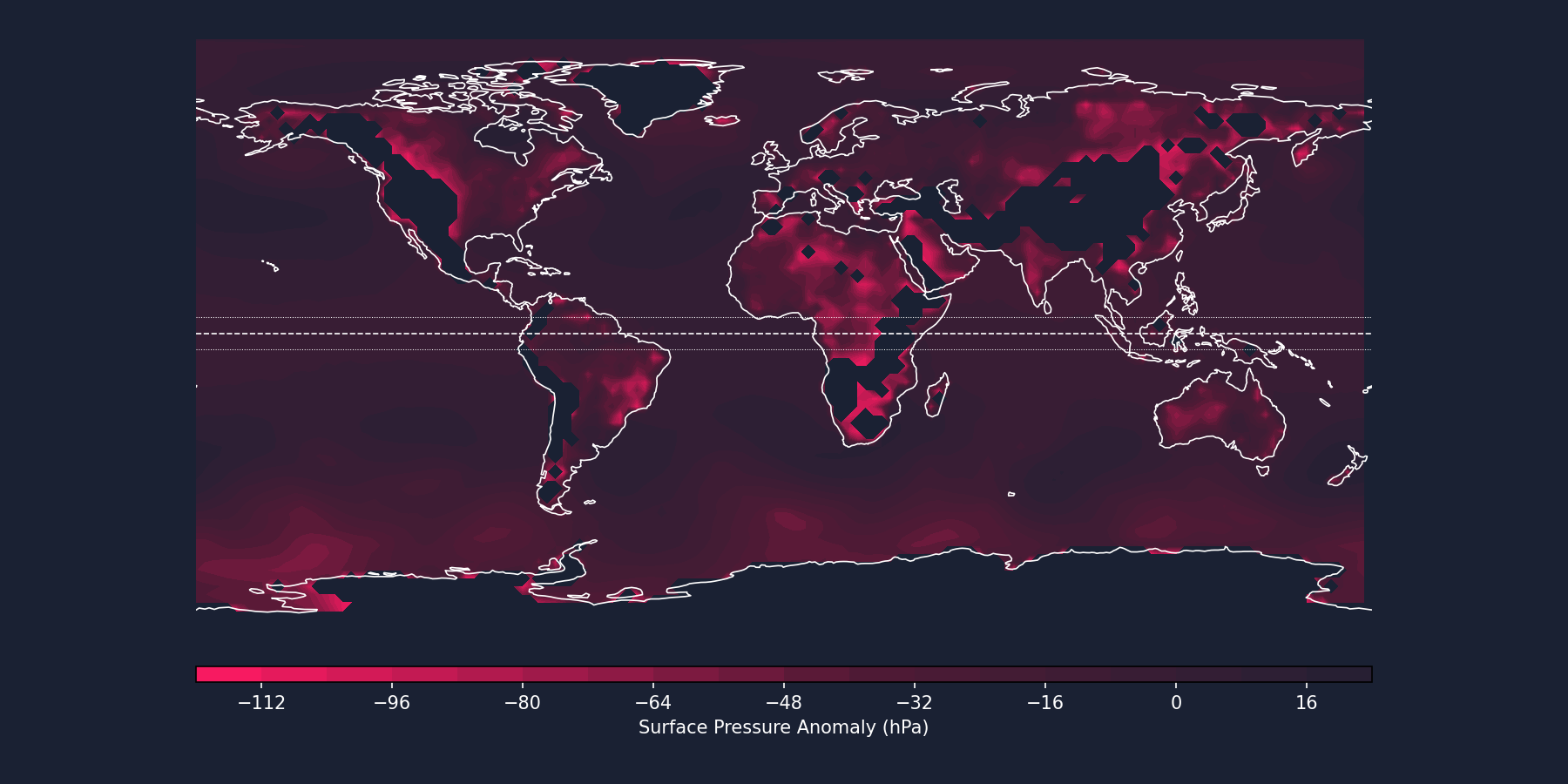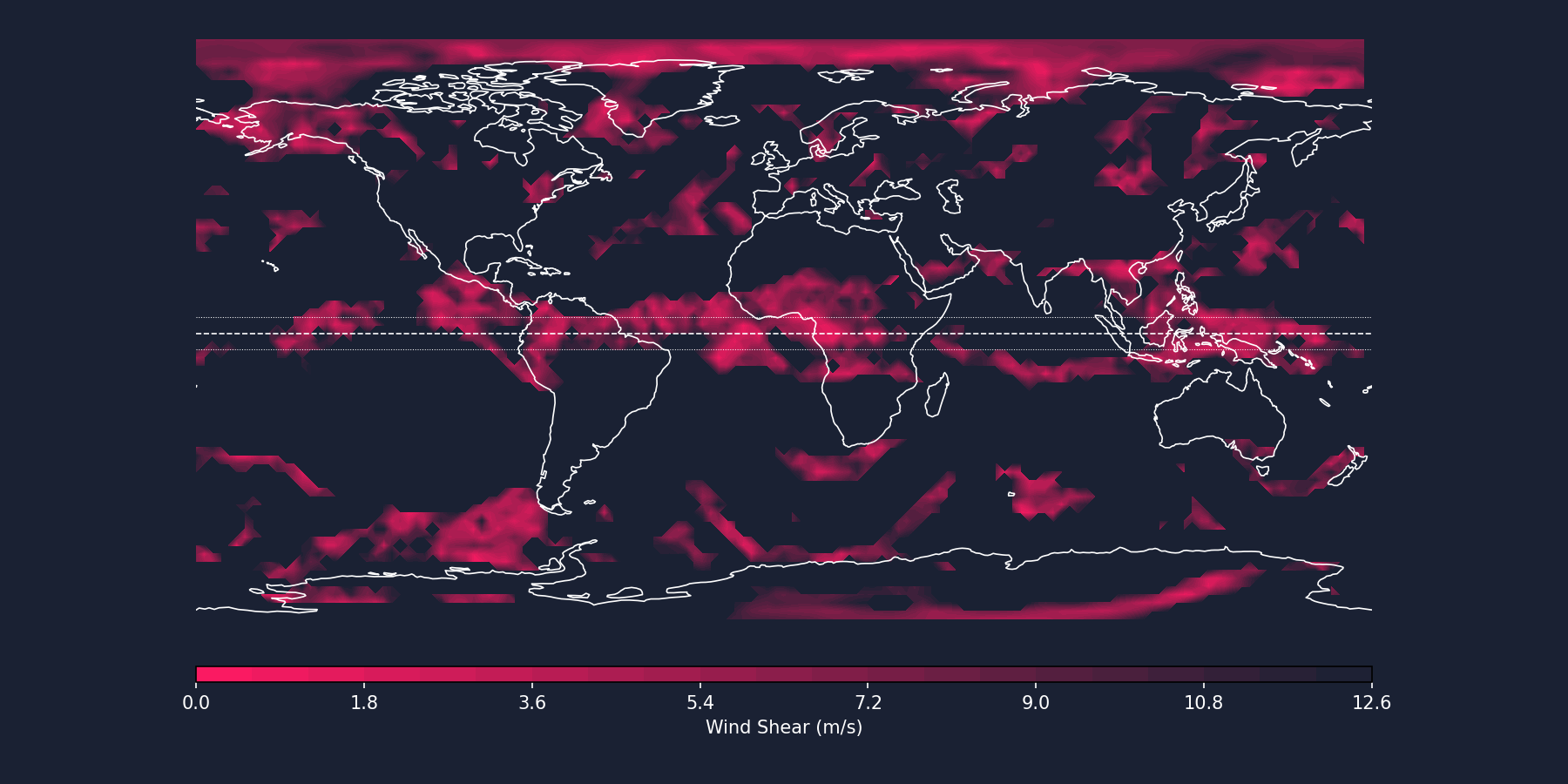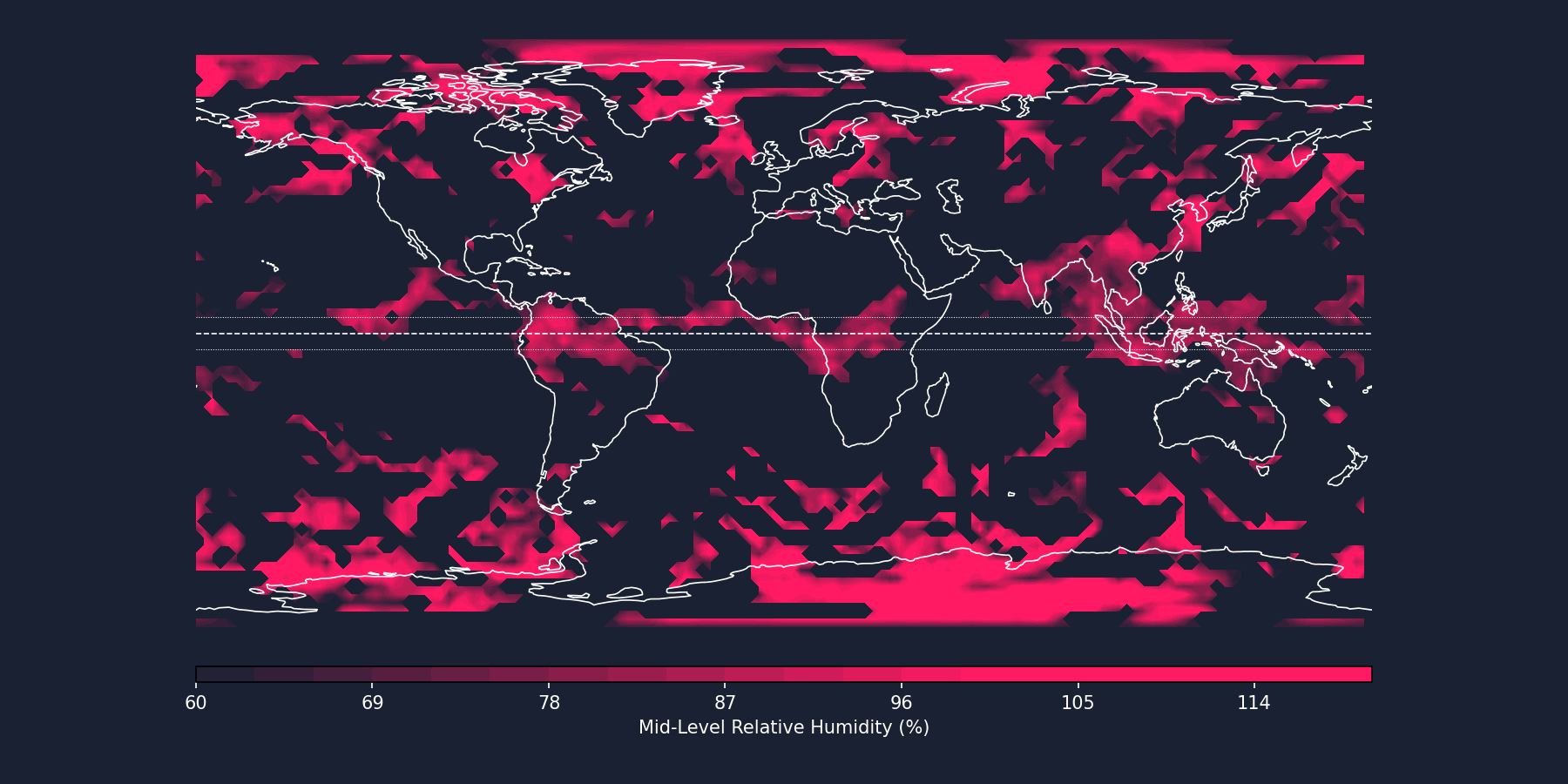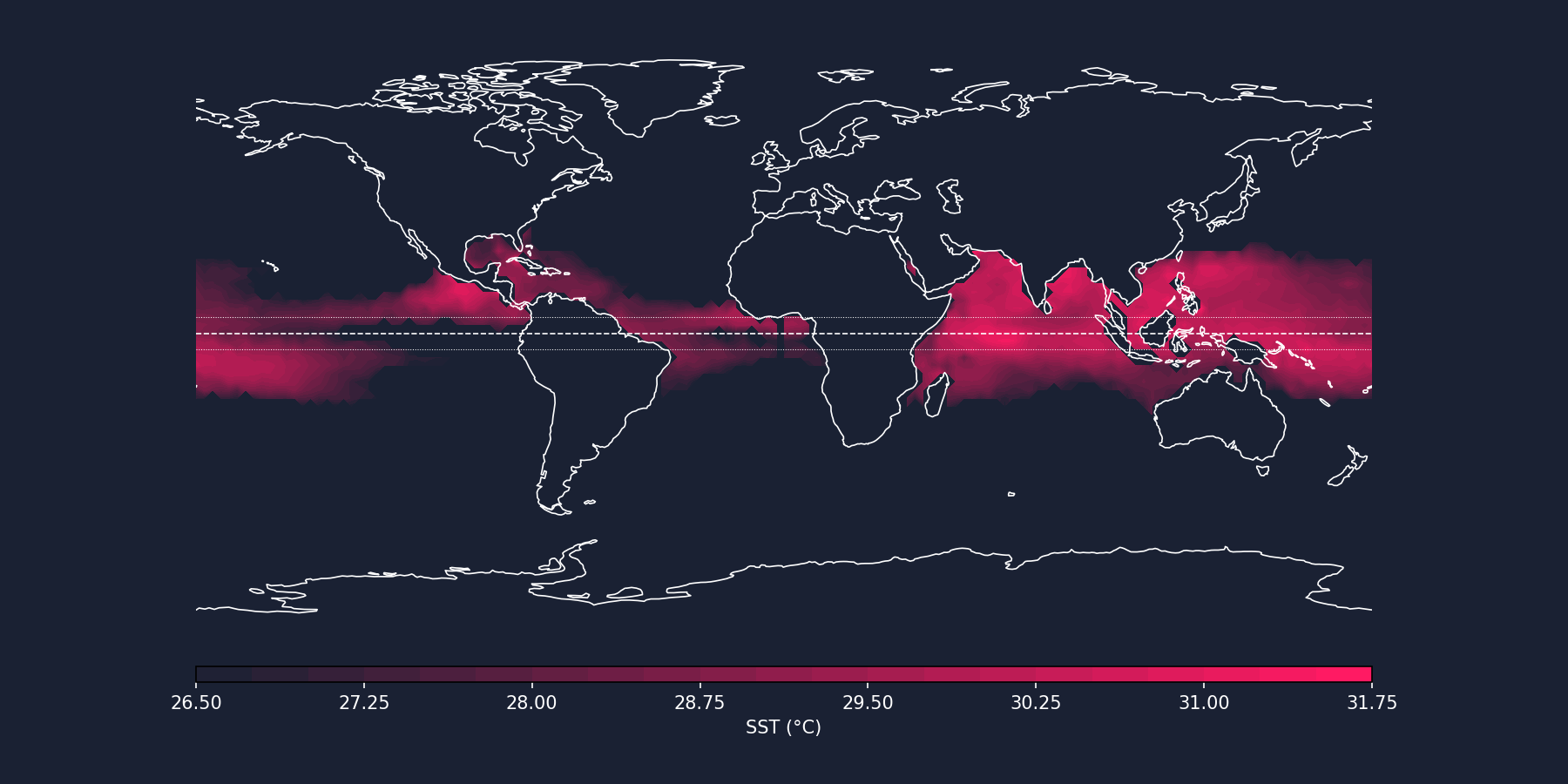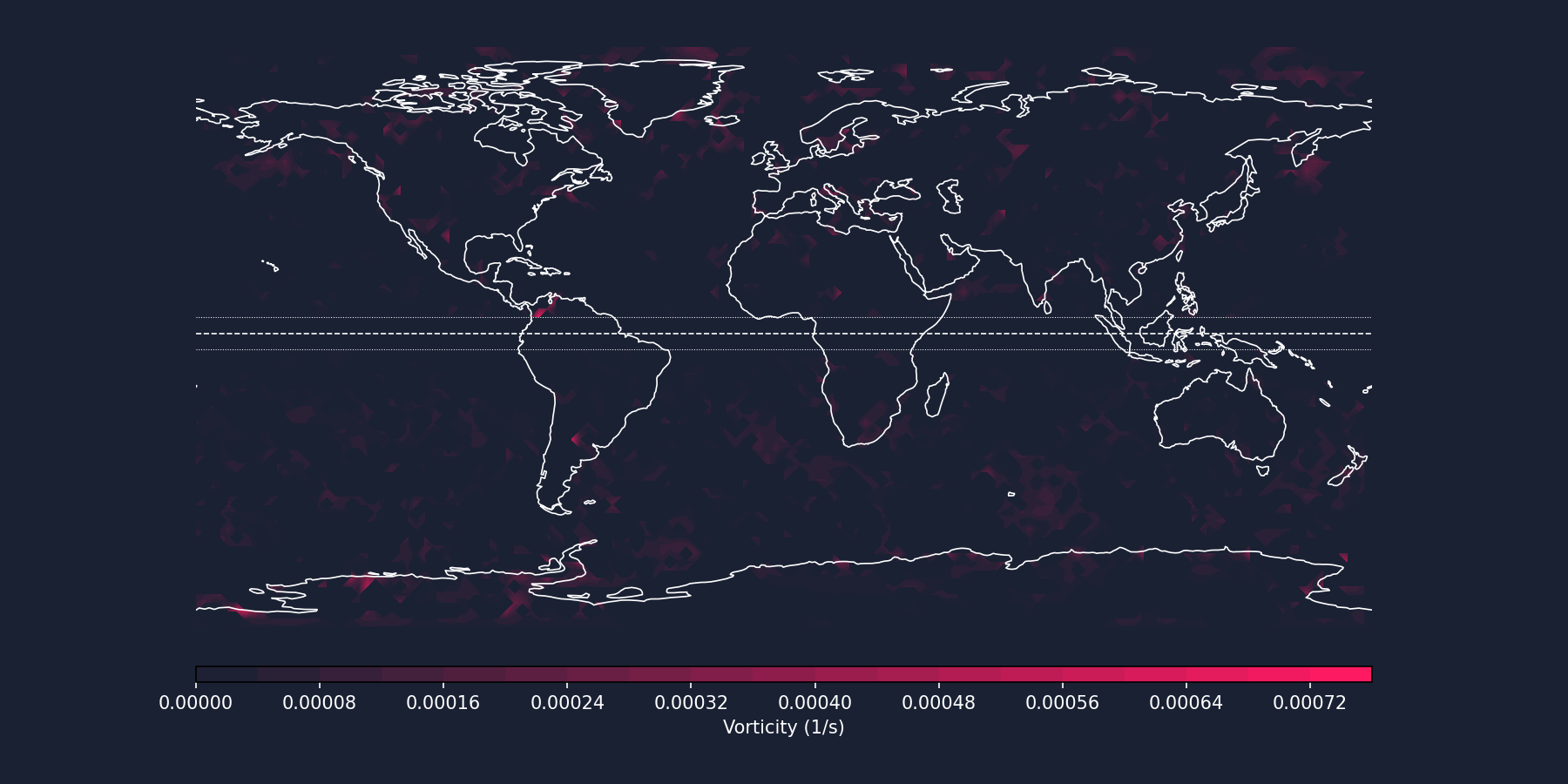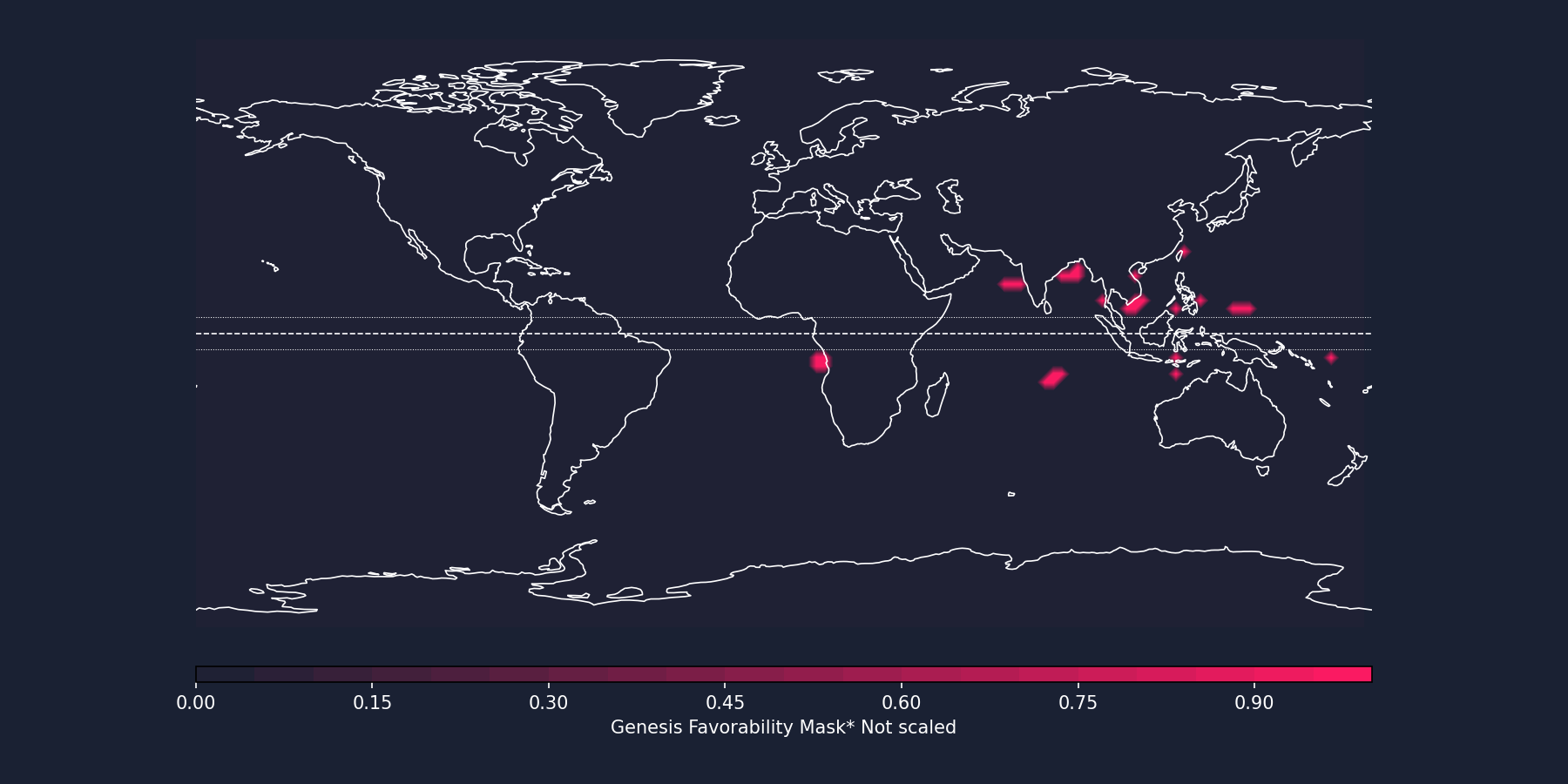NHC Atlantic Outlook
Fri, 23 May 2025 17:15:46 UTC
NHC Atlantic
For the North Atlantic...Caribbean Sea and the Gulf of America:Tropical cyclone formation is not expected during the next 7 days.
2-Day Outlook
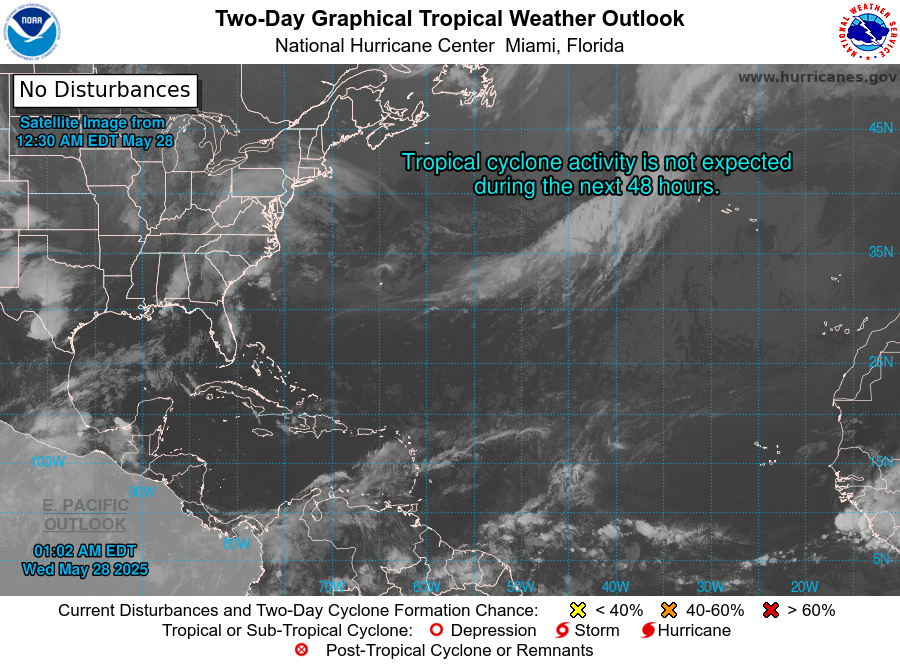
7-Day Outlook
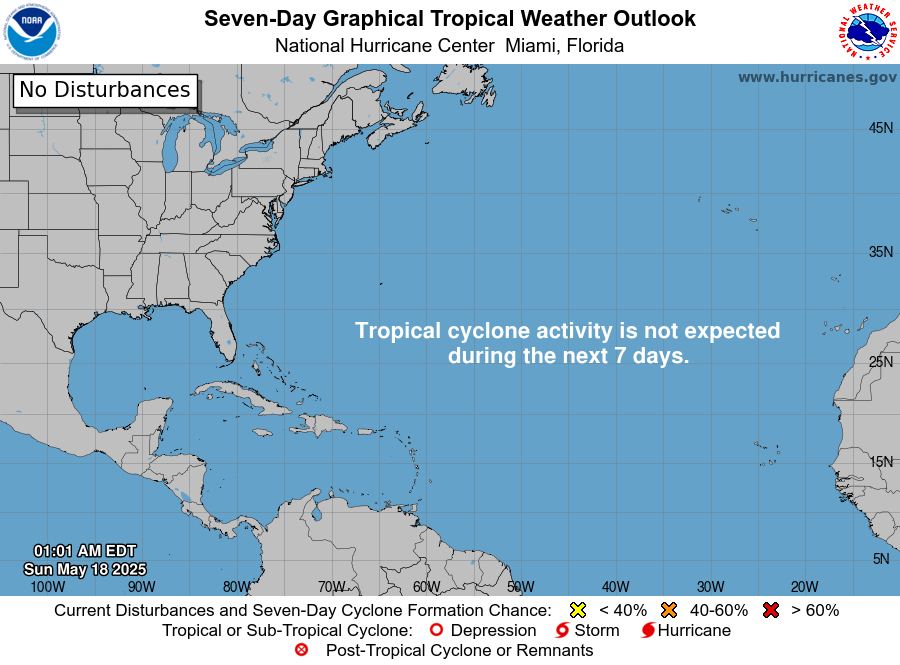
CPHC Central Pacific Outlook
Sun, 01 Dec 2024 05:39:10 UTC
CPHC Central Pacific
For the central North Pacific...between 140W and 180W:No tropical cyclones are expected during the next 7 days.
View Full AdvisoryECMWF 10-m Streamlines
This map visualizes near-surface winds from the ECMWF operational model using streamlines — continuous curves that show the direction of the wind at every point. Streamlines help us visually detect patterns of atmospheric flow, such as jets, troughs, and areas of rotation.
Forecasters at the NHC monitor 10-meter wind fields for signs of a closed low-level circulation — a common feature of early tropical cyclone formation. When streamlines wrap into a tight, circular pattern and form a closed loop, it may signal that a system is transitioning from a disorganized disturbance into a structured cyclone.
This early organization of wind flow is a key threshold in classifying an area as a potential tropical cyclone. While other ingredients like convection and mid-level humidity are also necessary, closed low-level circulation is often the first structural milestone forecasters look for.
Look for small, circular loops in the streamlines over oceanic regions — especially where other environmental factors also align for storm formation.
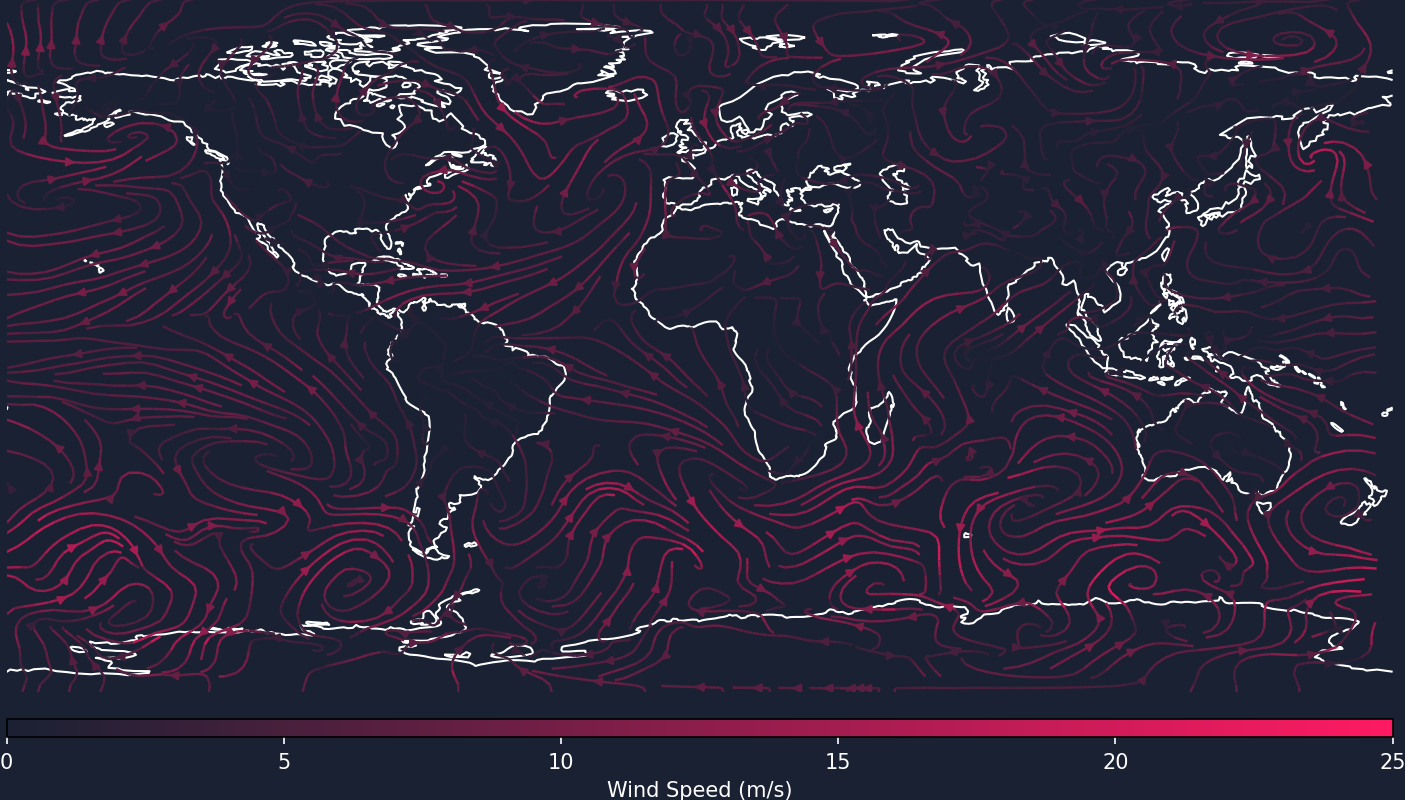
ECMWF Predictions
No active storm found in ECMWF data at this time.
Environmental Indicators
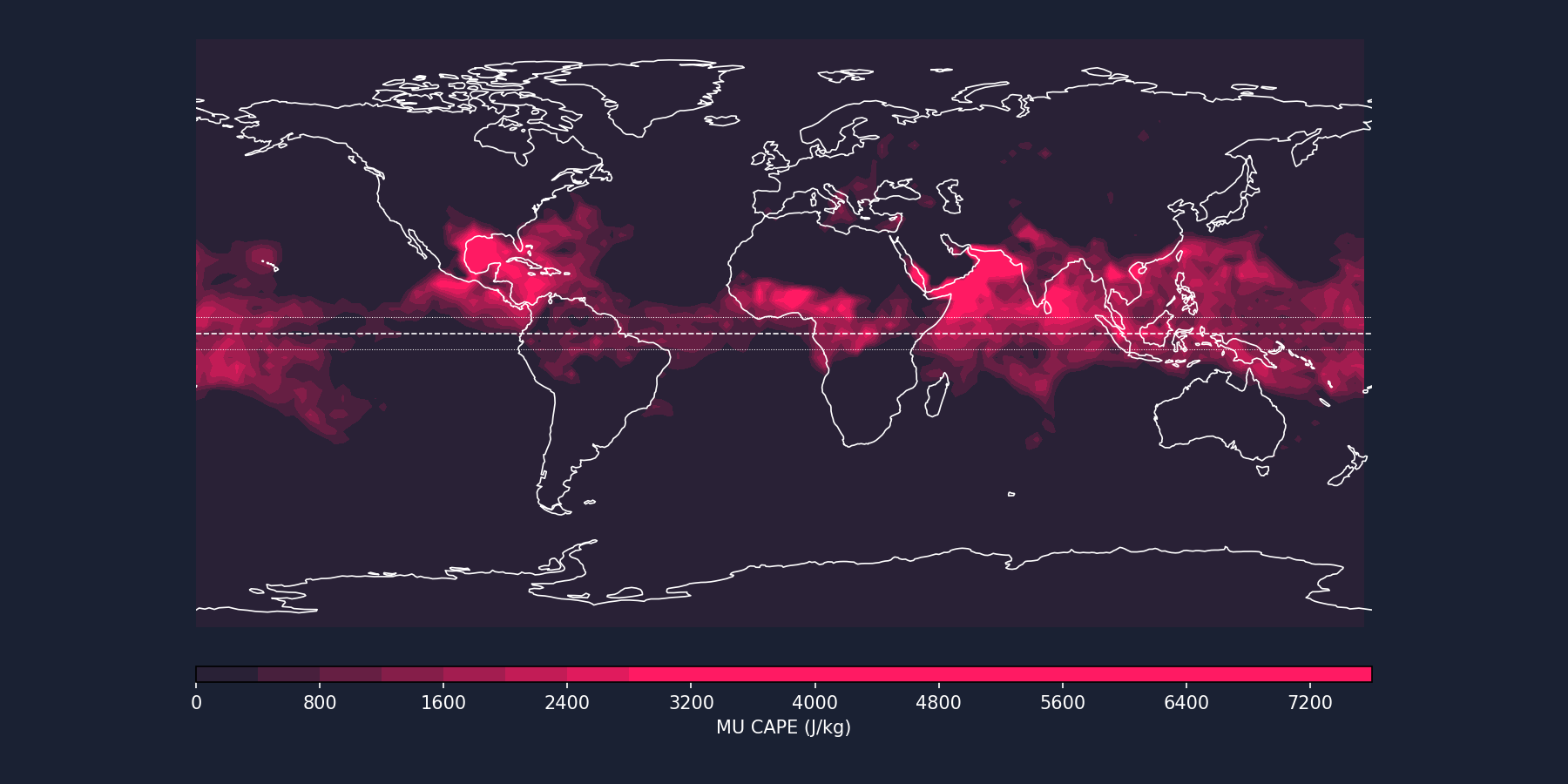
Hypothetical TC Drift Paths
This map displays hypothetical tropical cyclone (TC) paths projected from genesis-favorable zones identified by an environmental mask. These paths are computed using the Emanuel Beta and Advection Model, a physically based framework that estimates the motion of nascent cyclones by combining steering-level winds and planetary rotation effects.
The model blends winds from two critical pressure levels — 850 hPa (lower troposphere) and 250 hPa (upper troposphere) — weighted toward the lower level where most of a tropical cyclone's mass resides. It also incorporates a background component associated with beta drift, which arises from the variation of the Coriolis force with latitude.
Each pink trajectory represents a storm initialized from a grid cell where all five environmental thresholds were favorable: high CAPE, low vertical wind shear, high mid-level humidity, warm SSTs, and positive low-level vorticity. Arrows darken with time, tracing the cyclone’s evolution in 6-hour steps. These tracks can move over land given the steering winds, but in reality these storms weaken quickly when no longer over warm water. This means the tracks that move over significant would likely die out quickly and are not well represented in this model.
Hypothetical storms often drift westward and poleward, steered by large-scale tropical flow and Earth's rotation — this helps forecasters anticipate where early-stage disturbances might evolve into organized storms.
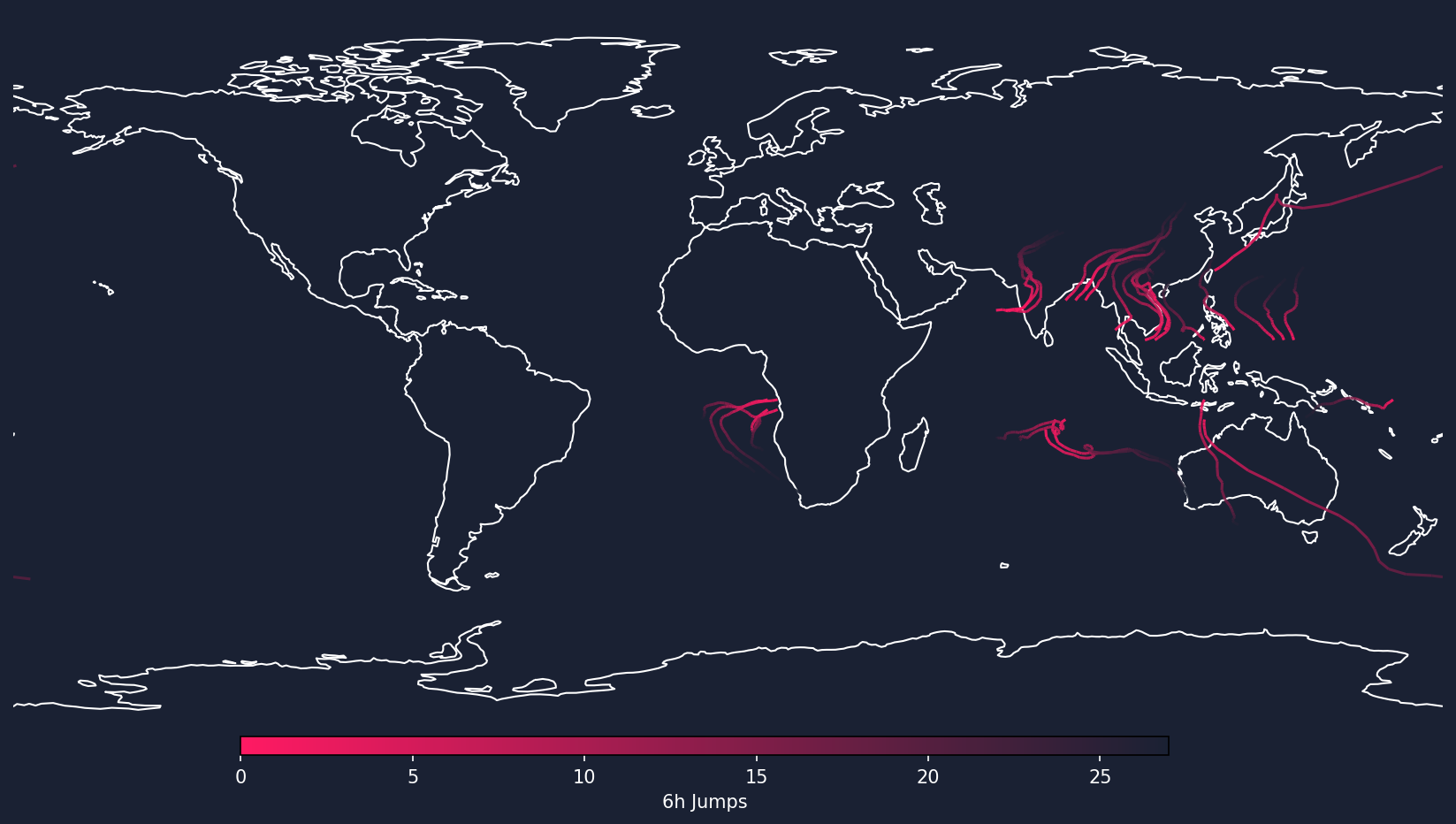
Pressure & Rainfall (hPa)
This chart shows 24-hour forecasts of surface pressure (in hPa) and precipitation (in mm) for select U.S. cities. The data comes from the Open-Meteo API, which sources its predictions from high-resolution numerical weather models like ICON (from the German Weather Service) and ECMWF's IFS. These are advanced general circulation models (GCMs) that solve physical equations governing the atmosphere — including thermodynamics, fluid motion, and radiation — to simulate and forecast future states of weather.
A sudden drop in pressure may signal the approach of a developing storm system. Increasing rainfall intensity often tracks with tropical activity or frontal systems. These paired indicators help visualize evolving atmospheric instability and potential hazards.
NBDC Gulf Buoy Data
This data comes from the National Data Buoy Center (NDBC), a division of NOAA responsible for monitoring ocean and atmospheric conditions using moored buoys, coastal stations, and drifting floats. These sensors play a vital role in tracking tropical cyclone development by recording variables like wind speed, barometric pressure, air & sea surface temperatures, and wave height — all of which help determine storm structure and intensification.
A sudden drop in sea-level pressure or a spike in wind gusts can signal rapid cyclone strengthening. Water temperature above ~26°C is a key fuel source for tropical cyclones. Wave and swell height give insight into the storm’s reach and energy transfer across the ocean. Monitoring these in real time helps improve forecasts and early warnings.
Wind: ESE (110°), 7.8 kt | Gust: 7.8 kt
Pressure: 30.01 | Air Temp: 82.6 °F
Water Temp: 83.8 °F | Dew Point: 78.1 °F
Swell: 1.3 ft | Wind Wave: 1.0 ft
NWS U.S. Radar
The National Weather Service (NWS) collects radar data using the NEXRAD (Next Generation Radar) network — a nationwide system of over 150 high-resolution Doppler radar stations. Radar works by emitting pulses of energy that bounce off precipitation (like raindrops, hail, or snow) and return to the radar dish. Doppler radar not only detects the location and intensity of storms, but also their motion — by measuring shifts in frequency caused by movement of particles toward or away from the radar site. This allows meteorologists to spot rotating storms and potential tornadoes in real time.
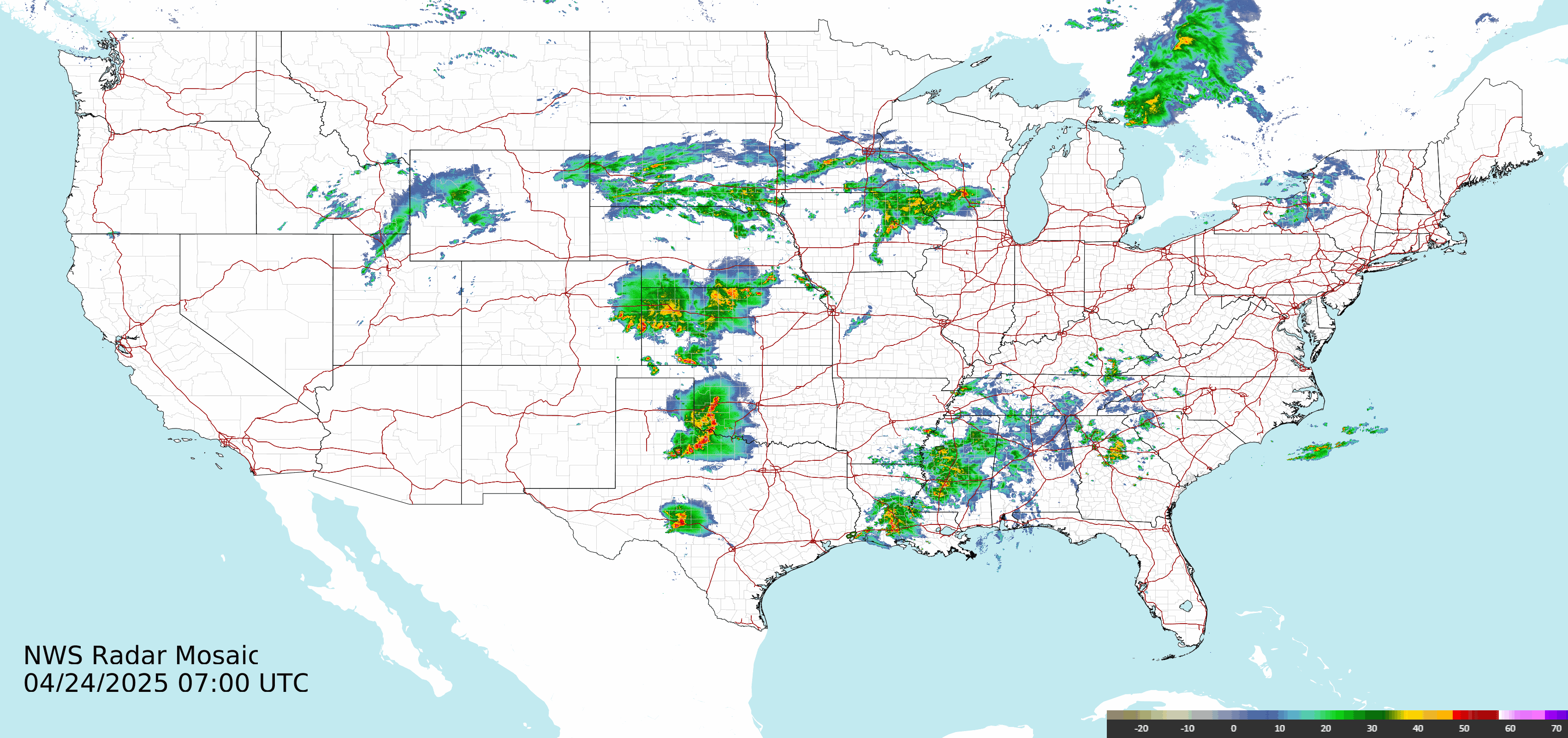
GOES 15-min Satellite
The GOES (Geostationary Operational Environmental Satellite) system is operated by NOAA and provides continuous weather observation over the Americas. Orbiting 22,300 miles above Earth, GOES satellites deliver high-resolution imagery every 15 minutes, helping track tropical systems, cloud formation, and atmospheric motion in real time. The Geocolor imagery shown here combines visible and infrared data to highlight clouds, land, and sea in a natural-looking format.

GOES Band 13 – Infrared (IR) Imagery
Band 13 (10.3 µm) is one of the most important infrared channels for tropical meteorology, measuring emitted radiation from cloud tops. Colder colors (red, yellow) signal deep convection, where strong thunderstorms punch through the upper atmosphere. These features often indicate the early stages of tropical cyclone formation.
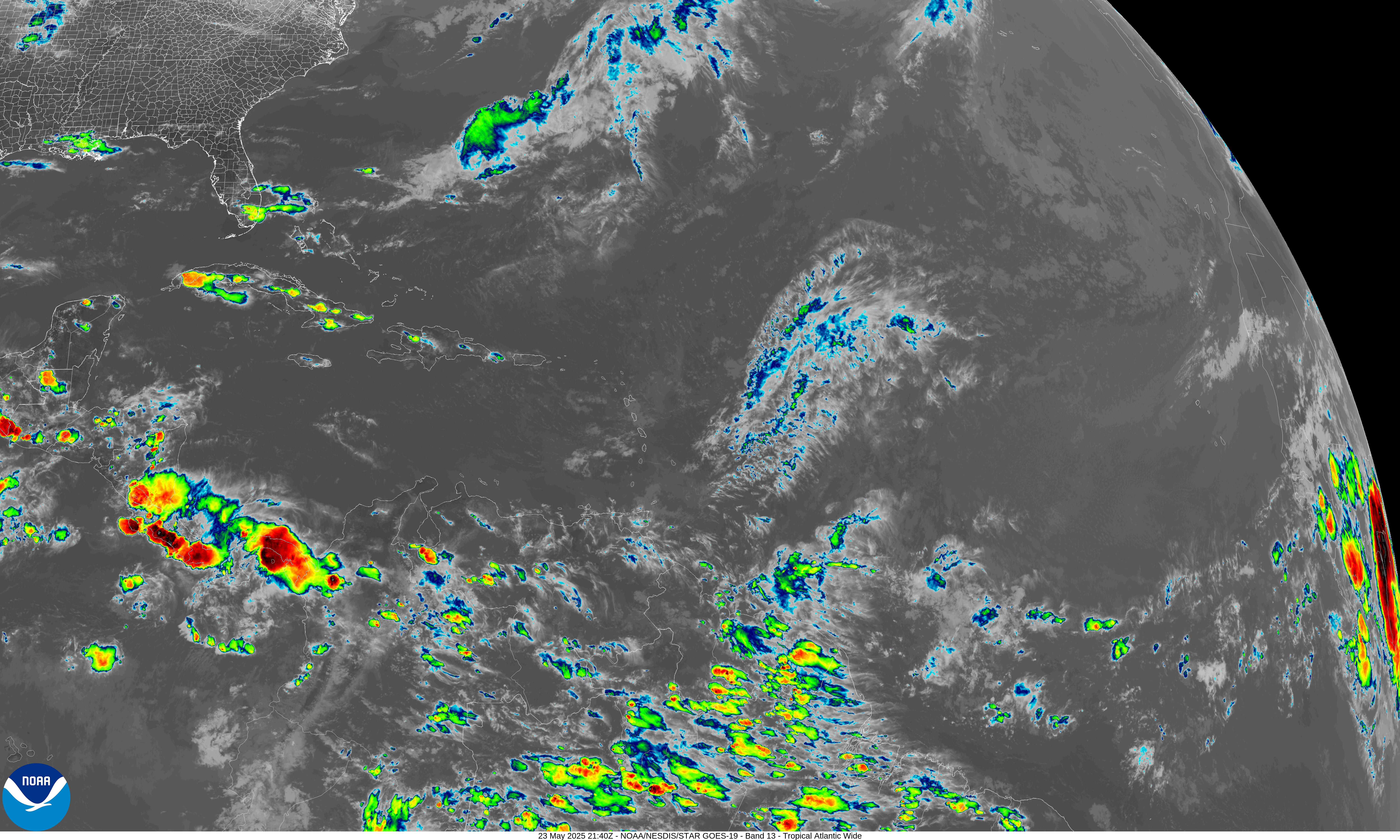
Most recent GOES Band 13 image. Provided by NOAA/NESDIS/STAR.
ECMWF Surface Pressure Anomaly
This map shows deviations in surface pressure from a standard atmospheric baseline of 1013.25 hPa, using ECMWF’s high-resolution forecast. Negative anomalies (dips below this value) often signal the presence of developing low-pressure systems — a common signature for tropical cyclogenesis, especially when paired with other favorable environmental conditions like low shear, high humidity, and strong convection. These TC-associated dips will be over the water; we will see these lows also over high terrain such as mountain ranges.
Limitations: This plot currently uses a constant global baseline rather than a climatological average, which may obscure local-scale anomalies. We are actively working on integrating a true pressure climatology to enable a more robust and regionally contextualized analysis of pressure anomalies.
Watch for large, circular low-pressure dips (deep pink zones), especially in the subtropics — these can be early signatures of developing cyclonic activity.
